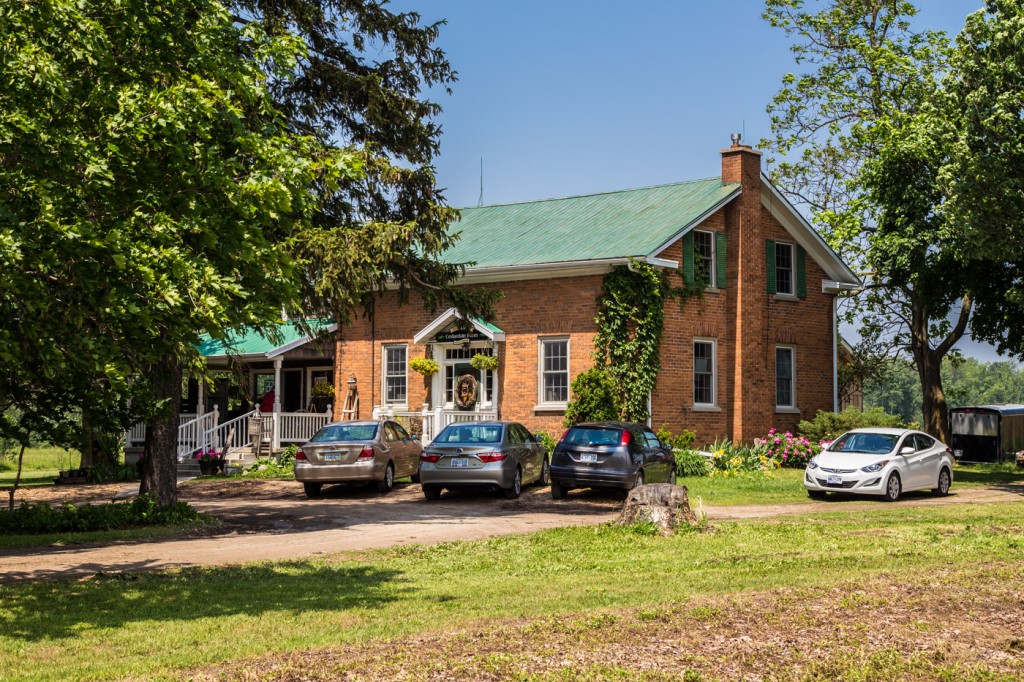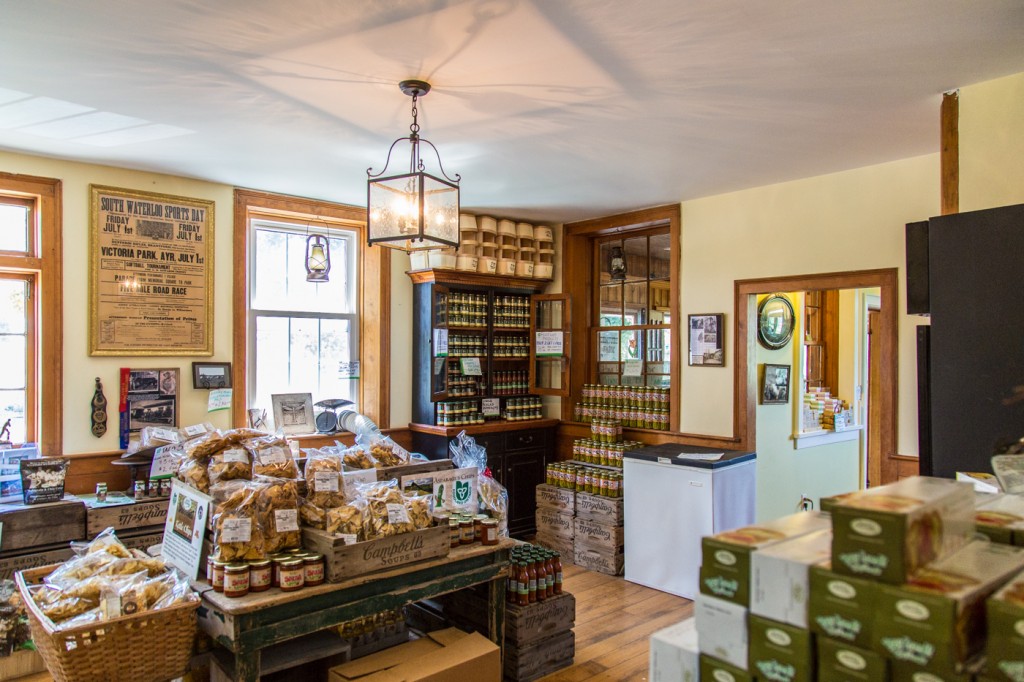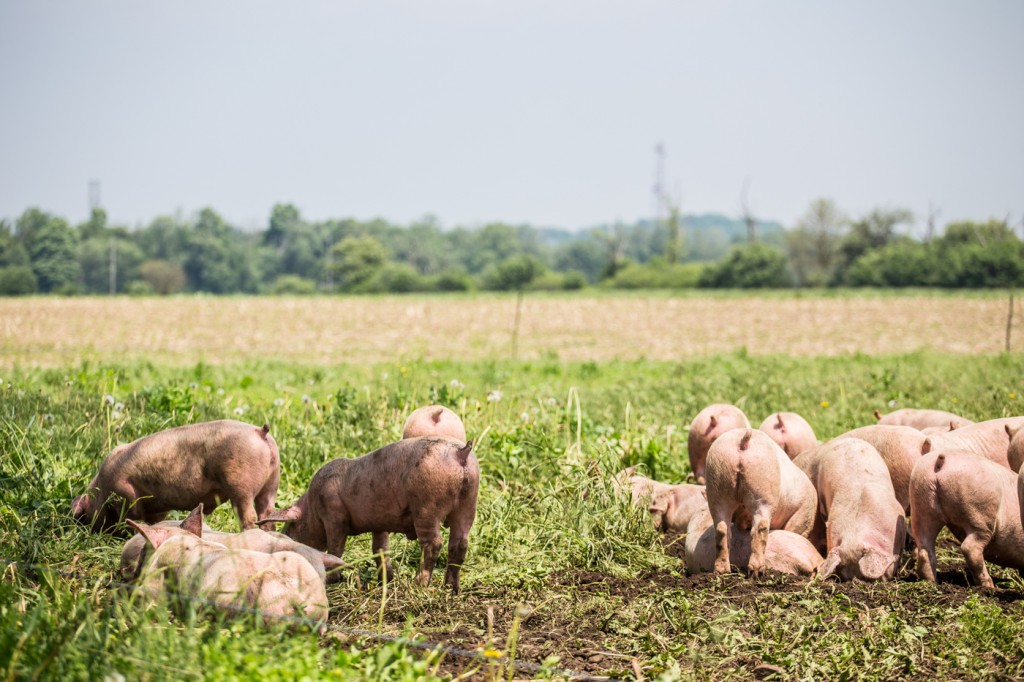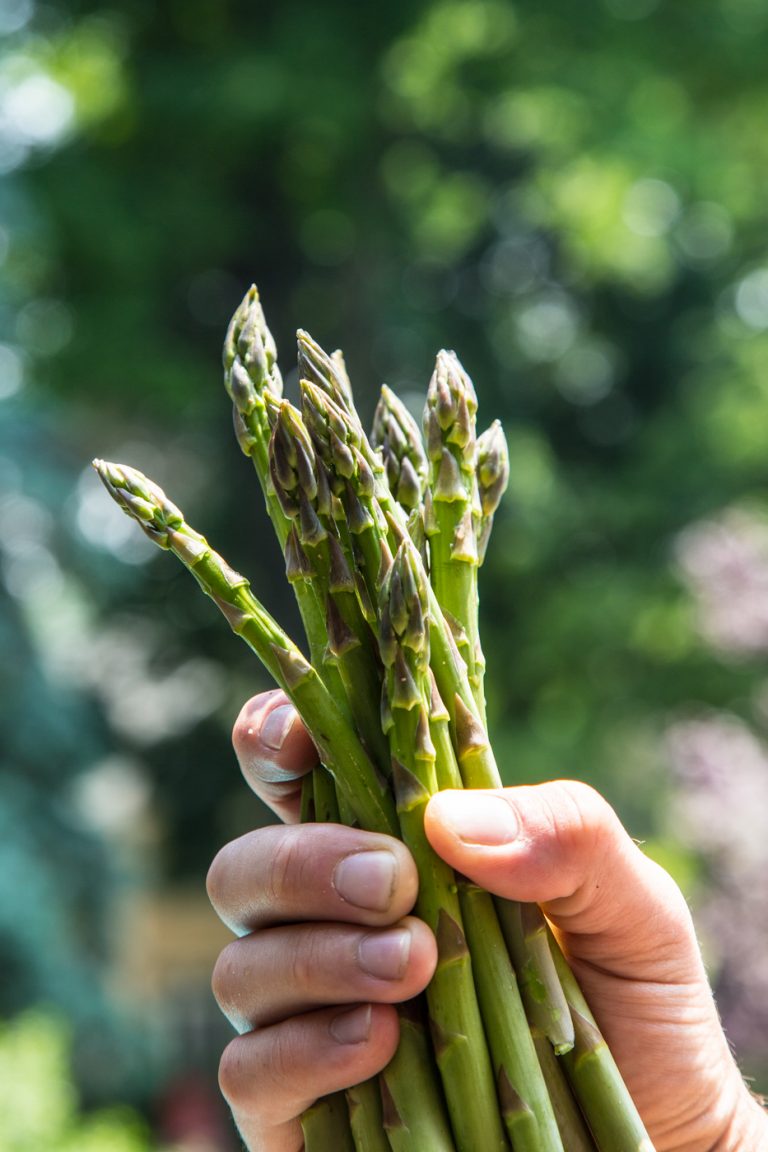Alistair MacLellan
CONTRIBUTOR
Matt Smith
PHOTO EDITOR
“My mom always tells me that you should get asparagus the day after a good rain, is that correct or is she just blowing smoke?” I ask Tim Barrie, owner of Barrie’s Asparagus Farm.
“No, she’s right, the asparagus is really fresh after it rains,” he laughs.
My mom isn’t a farmer – she lives in walking distance to uptown Waterloo – but her mission for snappy asparagus, following a good rainfall of course, is fuelled by the ease and opportunity to connect with farmers and learn about the food on your plate. Waterloo Region is often cited for its tech industry. But the traditional economies – building a barn rather than a web page, incubating eggs rather than startups – continue to plow through the seasons, supplying refrigerators across the country.
Waterloo Region is often cited for its tech industry. But the traditional economies – building a barn rather than a web page, incubating eggs rather than startups – continue to plow through the seasons, supplying refrigerators across the country.
Barrie’s Asparagus farm and store, nestled in the rural area between Kitchener and Cambridge, existed only as a family home four generations ago. Barrie’s grandfather was a blacksmith, shoeing horses for local famers and raising cattle. Barrie’s father continued after purchasing the farm until the economy of the time made him consider other options.
“In 1981 when interest rates went through the roof my dad could no longer continue in beef farming because he would buy them, finish them, sell them, and loose money,” says Barrie.
With financial hardship in mind, and little more than land and farming ability available to him, Barrie’s father transitioned to asparagus and after a couple of years the crop was taking off and customers were buying. He needed to maximize his return so he purchased a cooler in order to keep the leftover freshly picked product overnight and began to grow the business.
“That’s how the business grew, little bits and pieces added one thing at a time,” says Barrie.
Transitioning to a brand new crop isn’t easy but Barrie’s father had a few variables titled in his favour. For one thing, the land where the farm is located is perfect for growing asparagus – a common narrative for Waterloo Region farmers.
According to an economic study sponsored by Region of Waterloo Public Health and Human Resources Development Canada, Waterloo Region reported the second highest level of productivity per acre in the province, only toped by the Niagara fruit belt. The area is so fruitful that for every dollar generated from a farm, the widereconomy, connected to said farm, generates an additional $2.40.
“We have the perfect soil for growing asparagus because we are on sandy soil,” says Barrie.
But asparagus isn’t the only flourishing flora in the region. From apples to zucchini, one can find a cornucopia of local offerings, and not just fruits and vegetables. In fact, most farms in Waterloo Region raise livestock, specifically for beef and dairy production. Despite the availability of food, farmers face the constant pressure to get their products to market. For some this means sticking with wholesalers, selling produce at market rates. For others this means looking at their farm’s value-chain and figuring out how to add extra value to the food that they produce. Regardless which strategy they choose, marketing can often be the biggest hurdle.
Barrie accredits some of his marketing success to Foodlink, an organization whose mandate is to build a healthy local food system for Waterloo Region.
Foodlink was initially founded when Region of Waterloo Public Health and the Foodbank of Waterloo Region teamed up to examine the region’s local food system, only to discover a massive – and needless – gap between farmers and their urban customers.
Foodlink aims to bridge the gap through a database of farms that offer direct farm-to-table sales and information about seasonal eats in the region. According to Barrie, every year is different, so checking in with your farmer will increase the odds of a meal harvested at its peek.
Generations ago, maybe when Barrie’s father started to sell his cattle, ruby-red strawberries weren’t an option during the crisp white of winter, and a vibrant, green asparagus shoot wouldn’t be expected on the gray canvas of late fall. Today, instant availability is second nature. Quality – not to mention environmental standards associated with food growth and transportation – are quickly sacrificed for immediacy and convenience.
But Waterloo Region is responding.
Large-scale, added-value farms like Barrie’s Asparagus or Herrle’s Market are gaining momentum. Over 70 community gardens dot Waterloo Region’s map. And farmers’ markets, whether as established as the St. Jacob’s faction or as fresh as Belmont’s neighbourhood-driven chapter are becoming a keystone in what it means to be a Waterloo Region resident.
“As a society we’ve moved to this new model where we wanted to have fresh strawberries year round,” says Barrie. “But I think people are realizing that best food is local from your community, fresh and seasonal.”
After the generations of plaza paving, Costco developing and farm taxing that distanced the individual from the farmer, Barrie’s success indicates that things are changing, or reverting to a different kind of consumerism. Perhaps Waterloo Region’s food systems are much like asparagus, best after it rains.

